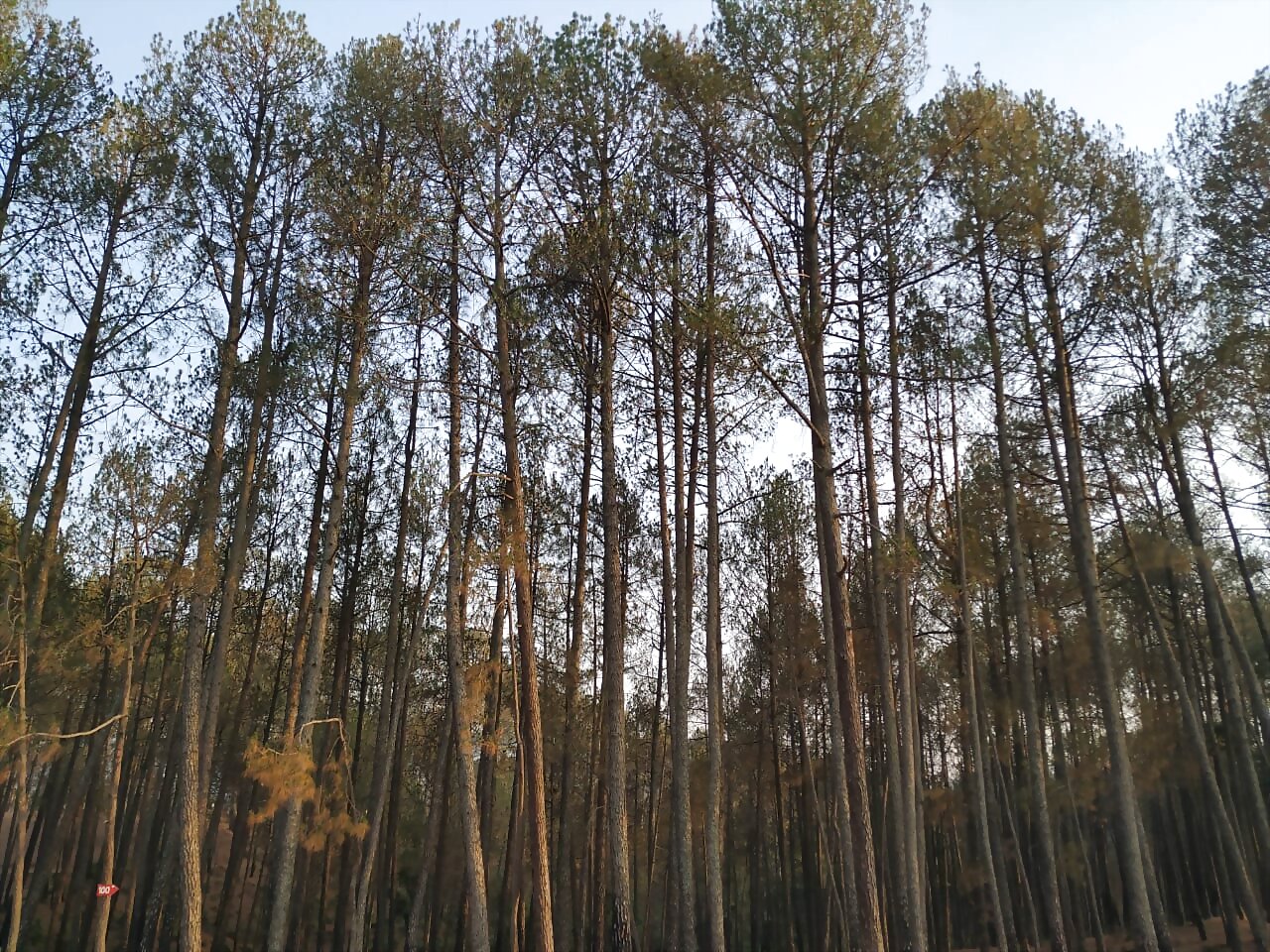
views
Ranikhet, Almora: As a raging fire continued to destroy precious wealth in the forests of Uttarakhand, scientists have warned that this may be among the worst infernos we have seen in nearly two decades.
While replying to a comment on the blaze, Mark Parrington, senior scientist working with the European Centre for Medium-Range Weather Forecasts (ECMWF), wrote on Twitter, “Looking at the May monthly total fire radiative power, 2019 is second worst in 16 years after 2012.”
Parrington explained that radiative power is the quantity related to the intensity of the active fire which scientists use to estimate emissions of pollutants.
While the state and Central government seem to have no effective disaster management plan in place to control such forest fires in the Himalayas (or elsewhere in the country) occurring every year, the total loss of forest wealth has gone beyond 2,000 hectares.
This is also causing a lot of carbon emission and contributing to heating in the mountains.
This year, the total number of forest fires in Uttarakhand has crossed 1,500. Apart from loss of flora and fauna, forest fires of such magnitude and frequency destroy the rich biodiversity of the mountains.
The central Indian states of Madya Pradesh, Chhattisgarh and Odisha have also been badly hit by the forest fires.
Last year, the Government of India told Parliament that the number of forest fires has increased by nearly 2.5 times between 2011 and 2017.
In 2011, as many as 13,898 forest fires were reported from across the country, while in 2017, this number rose to 35,888.
Experts say fires like the one in Uttarakhand are mostly “man-made”, but forests are more vulnerable when conditions are favourable for such incidents.
Warming and prolonged dry weather during the pre-monsoon season make the forests highly susceptible to fire.
The fire takes place mainly due to two reasons — warmer temperature that creates perfect conditions for fire and leaf-fall before monsoons that helps spread the blaze.
Also, in the months of April and May, people in the hills burn dry grass in the hope of getting better grass after monsoon and this triggers forest fires on several occasions.
“Locals were never sensitised or educated in this regard. These men and women could have been a force to control the fires in the mountains, but the forest department has had a hostile and unfriendly attitude towards them,” said Prof Ajay Rawat, an expert on Himalayan history and ecology.
Prof Rawat said there were more than 350 forest guest houses and a large number of unemployed youth in the hills.
“A large number of tourists come here every year. If we train the youth wisely, this human force and these forest locations can be used to develop eco-tourism and that will help protect the forest fire effectively,” he said.
Meanwhile, villagers blamed contractors, land mafia and “corrupt” forest officials for the fires.
Covering fake plantation targets and encroaching land for construction are also cited as reasons behind such blaze.
However, researchers and scientists said no rain or very less rain in the pre-monsoon months is becoming a major problem and the phenomenon of climate change is further deteriorating the condition.
“Climate change has certainly a role to play. If there are periodic showers in the jungles, the trees and plants remain moist and there is less possibility of fire. Small fires which occur in forests do not change the structure of forest and the forest rejuvenates itself, but if the frequency is as high as we are witnessing now, then it is a problem,” said Dr SP Singh, renowned biologist and former vice-chancellor of Garhwal University.
Singh is now the director of Central Himalaya Environment Association (CHEA).
The Himalayas is home to more than 10,000 big and small glaciers. Even as these glaciers face threats due to rising temperature, massive construction projects and cutting of forests are destroying groundwater sources, and raising the chances of forest fires.
“Earlier, there were many springs here and small water streams used to flow all over in the jungles crisscrossing the forest land and that used to control the spread of these fire. Over the last two-three decades, we have seen the water sources disappearing from our surroundings,” said Dayal Singh, a 50-year-old villager of Dalmoti near Ranikhet.
Many believe the abundance of pine trees in the forests of Himalaya is also a major cause of such fires.

Pine makes forest fires more likely but the tree itself is very tolerant to fire and can survive effectively. (Photo: Hridayesh Joshi)
However, Dr Singh, who has researched on pines for decades, said, “Though the pines make fires more likely, they do not trigger the forest fire. Their leaves are highly inflammable, but interestingly, pine trees themselves are very tolerant to fires.”
So, when other plant species are gutted during the forest fires, pine trees survive effectively. “The high canopy of pine trees also help their case,” Dr Singh added.
Today, pines have more than 100 species across the world and cover one third of the world’s forest area. In India, experts say nearly 40% of forests are covered by pines.
The Indian Pine is indigenous and its massive spread is also attributed to its commercial value. It was first encouraged by the British and contractors also promoted the species for their benefit.
On the other hand, trees like Oak, Cedar (Deodar) and Rhododendron are highly salubrious and preserve the moisture which can help prevent forest fires.
However, environmental experts believe, in the present scenario, there is an urgent need of a strong disaster management plan and work force to combat the problem.
“Unless it (forest fire) is graded as a national disaster, it will not be controlled. Take example of floods. When a flood hits the country, all other departments also take interest (and work proactively) and that helps, but this is hardly a case with forest fires which has become a regular feature in summers in hills,” said Prof Ajay Rawat.


















Comments
0 comment